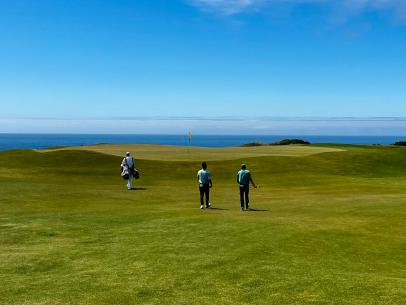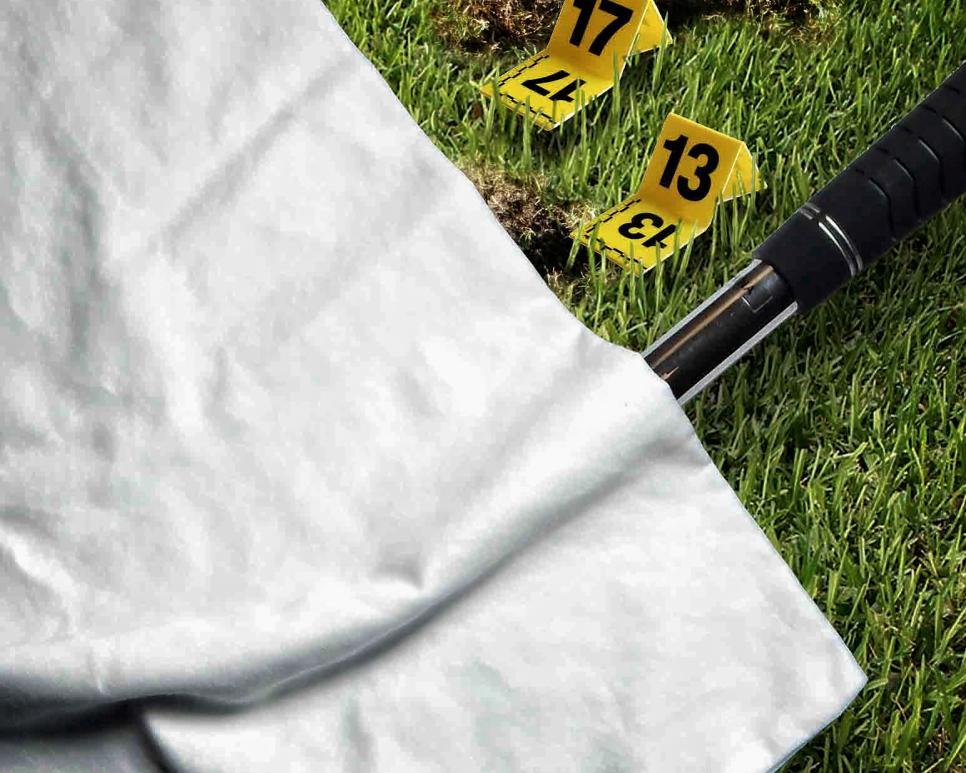Never throw a golf club, except . . . – Australian Golf Digest

- by Admin
- September 27, 2024

This is a special free version of Low Net, a Golf Digest+ exclusive newsletter newsletter written for the average golfer, by an average golfer. To get Low Net each week directly to your inbox, sign up for Golf Digest+ right here. Have a topic you want me to explore? Send me an email and I’ll do my best to dive in.
The 17th green at my home course has a tricky hole location we call “the flag-punching pin.” This dates to the time the best player in our group was so enraged after four-putting, he walked up to the flag and punched it.
If you’re wondering, yes, this looked as ridiculous as it sounds—flagsticks don’t provide much resistance, so he almost dislocated his shoulder. My friend then proceeded to fungo his ball 200 yards into the water with his putter, showcasing more athleticism, but the same absence of emotional restraint.
I’m not one to judge. One time after pulling a drive into the trees, I helicoptered my driver behind me, where it left a dent into the adjacent green–all in full view of the greens committee member who was my partner. Just last week, I was so frustrated by a bad shot, I kicked my bag over with enough force to convert a 40-yard field goal.
On the long list of irrational golfer behaviors, outbursts like these belong at the top. Most golf we play is highly inconsequential, yet we can react as if careers and bodily limbs are at stake. The time I threw my driver wasn’t even a tournament, but the difference between a 42 and a 44 on the front. The only thing worse than acting like an ass is trying to argue there was a good reason.
More Low Net Golf Digest Logo A survival guide to your nightmare hole  Low Net The best case for golf yet
Low Net The best case for golf yet  Golf Digest Logo How to be a less miserable golfer
Golf Digest Logo How to be a less miserable golfer
Most golfers can admit these assorted acts of club-throwing and flag-punching reflect misplaced priorities, if not terrible etiquette. When my boys were younger, I told them I’d yank them off the golf course if they couldn’t compose themselves, but neglected to issue myself the same warning. But it’s one thing to recognize these tantrums as regrettable, quite another to wonder if they ever actually help.
This is where it gets complicated. At our most primal level, angry outbursts can release pleasing hormones like dopamine and endorphins, which is subconsciously what we’re seeking when a club leaves our hand. It can also serve as the kick in the backside we occasionally need.

“Does it motivate? Sure,” said Dr. Bhrett McCabe, a sports psychologist who works with a number of tour players. “It raises energy that sometimes helps focus. But it can also lead to undisciplined decisions or actions so it is a fine line.”
When you pay for your own clubs, this is important to consider. At least when a tour player hurls a driver into the lake, there’s a replacement waiting free of charge. In a 2015 Golf Digest story by Dave Shedloski, “When Tour Pros Need To Murder Their Golf Clubs,” the 2003 Open champion Ben Curtis acknowledged he had lost some of his competitive edge once he started trying to suppress his anger to set a better example.
“Before I had kids, I had a release,” Curtis said. “I don’t want my kids—or any other kids—to see me behave that way, throwing a club or what have you, so I’ve stopped. But I think that’s why I haven’t played as well recently. You have to have a release. You play with fire out there, and a little bit of a release keeps the fire under control.”
The “under control” part is really what matters, however relative. In a concession to human frailty, I’ve taken a softer stance about anger by saying it’s permissible under two essential conditions: It can’t affect the experience of others; and it can’t be carried into the next shot. This aligns with the advice of Dr. Mitch Abrams, a sports psychologist and anger-management expert who employs the same metaphor as Curtis. Abrams has called it “adjusting the flame,” in which a little emotion can be motivating and helpful provided it doesn’t consume you. One way to ensure that is to have a better sense of your triggers, and practice techniques that can pull you back from the brink—deep breathing, envisioning a calm place, that sort of thing.
“Trigger recognition and ability to calm down is like packing a travel bag—you need to have a portable set of skills to go with you,” Abrams said.
It’s all about harnessing your emotions constructively while not losing sight of the bigger picture. But a word of advice about golfers who get hot once in a while: Don’t tell us it’s just a game. That’s bound to piss us off even more.
This article was originally published on golfdigest.com
The Latest News
-
November 15, 2024Red Dawn: Australian Football League’s Gold Coast Suns Launch ‘Fearless’ New Brand, Logo
-
November 15, 2024Kyrgios confirmed to return to ATP Tour at Brisbane International 2025
-
November 15, 2024Australian bounce India’s arch-enemy amid KL Rahul dilemma
-
November 15, 2024Nick Kyrgios set to make long-awaited return to tennis as comeback date revealed
-
November 15, 2024List wins elusive DP World Tour card, Barron loses his





